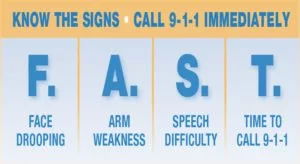From Cardiologist to Patient
By: Anil George, MD
May 30, 2019
Home » Crouse Connects » From Cardiologist to Patient

What could, I, a practicing cardiologist at Crouse Health, possibly have in common with Howard Washington, a 20-year-old guard on the Syracuse University men’s basketball team?
Three things, actually: We both suffered a stroke; had a heart defect that caused it; and were saved by the expertise of physicians and other providers at Crouse.
Our stories begin with virtually the same words: “It started out just like any other day” and both thankfully end with, “I lived to tell about it.”
By now, you may have heard about Howie’s experience. Following class one day last fall, he felt sick and shaky, collapsed on the Quad on the S.U. campus, and was brought to the Crouse ER.
Code Blue
On April 4, I was right here in the hospital, in between cases in the Miron Cardiac Care Center. Anticipating a busy afternoon, I went to the cafeteria to grab a bite to eat. I returned to the lab with my lunch and tried to set my tray of food on a table, which seemed to be moving. At the same time, I felt drops of water; turns out, I was drooling.
I sat down, and a nurse walking by took one look at me and asked if I was alright. When I tried to answer, I couldn’t talk. A “Code Blue” (adult emergency) was called and I was whisked away immediately to our Emergency Department.
Like Howie seven months prior, I was having a stroke.
Within nine minutes I had a CT scan that confirmed the diagnosis. Within 11 minutes, I was given tPA, short for tissue plasminogen activator, which works by dissolving the clot and improving blood flow to the part of the brain being deprived of blood flow. An hour later, I was talking normally and feeling better.
Howie, on the other hand, had to have an advanced procedure to remove his blood clot in the brain. Lucky for us both, we were around others who could come to our aid quickly and we were treated by the neurologists and neurosurgeons at Crouse, a nationally designated Comprehensive Stroke Center that routinely has the best stroke treatment times in the region.
Heart Issue
As it turns out, the cause of our strokes was the same: a patent foramen ovale (PFO), a hole in the heart that didn’t close the way it should after birth. Once again, we were both fortunate to have our PFO closures done by the best cardiologists in the area.
Now comes the “I lived to tell about it” happy endings. For Howie, it meant being able to play in SU’s season opening game just weeks after his stroke and heart procedure — plus many more years of athletic activities ahead.
For me, it has meant a time of tremendous gratitude; appreciation for life; and an affirmation of my faith.
While I strive each day to treat my patients as if they are my own family, I was on the receiving end this time. The genuine care and concern of so many, least of all my cardiology partners at Crouse, was overwhelming. The physicians, nurses and staff who treated me were stellar in every regard — not because I’m a Crouse doctor, but because I was, simply, a Crouse patient.
Laying in the ER, I was comforted by my wife, Biby who was summoned from her medical practice by one of my partners. She, in turn, was comforted by Missy Domachowski, a social worker in the emergency department. We both were comforted by all those around us in the best possible place for stroke treatment. At home, we were comforted by our children and family and friends.
Lessons Learned
Lastly, I was comforted by the faith that has sustained me all of my life and will continue to guide me along the journey. My experience has presented lessons to me about life, faith and relationships. I recently shared my story with my fellow congregants at Calvary Chapel; it was honestly the hardest thing I’ve ever done. I am hopeful that my story and lessons will help others going through darkness in their lives.
By training, I’m a physician and would, therefore, be remiss if I didn’t end this story by asking you and those you know and love to learn the risks for stroke 
> Watch Dr. George: Cardiology with Carepassion
> Read Howard Washington’s Story
Anil George, MD is a graduate of Debrecen Medical University in Hungary and completed his residency and a fellowship at SUNY Upstate Medical University. The Director of the Cardiac Catheterization Lab at Crouse Health, Dr. George is board certified in cardiovascular disease, internal medicine, interventional cardiology, vascular medicine and nuclear cardiology.
Categories: Crouse Physicians
Tags: cardiology
Share this
